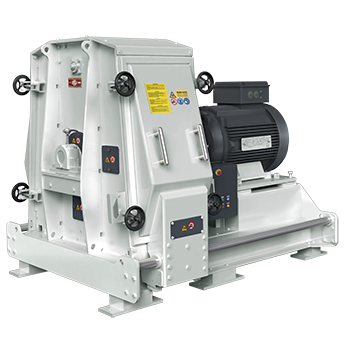Wet wood chips Grinding
Wet wood chips can clog machinery, reduce grinding efficiency, and potentially cause damage to equipment. However, with specialized machines designed to handle wet materials, including wet wood chips, it is possible to accommodate the moisture content. The specific approach to grinding wet wood chips will depend on the type of grinder you're using, the volume of material, and the moisture content.
Here are some considerations and methods for grinding wet wood chips:
1. Preparation and Pre-Processing:
- Chip Size: Ensure that the wet wood chips are appropriately sized for the hammer mill. Large pieces might need to be pre-processed through a chipper or shredder to reduce their size.
- Uniformity: Aim for a uniform size distribution of the wet wood chips to ensure consistent processing in the hammer mill.
2. Hammer Mill selection:
Choose a hammer mill with a design that's suited for handling wet materials. Some hammer mills have larger openings, modified rotor designs, and better ventilation to prevent clogging and improve efficiency.
Adjustability: Opt for a hammer mill with adjustable settings to control the size of the output particles. This can help tailor the process to your specific requirements.

The MM series hammer mill is made up of a sturdy frame, the sheet metal sides of which are equipped on the outside with reinforcing ribs. In the lower part there are the sliding guides of the drawers carrying the sieving net which facilitate its extraction during the changeover operation. The larger models are equipped with a net extraction system fully automatic, by means of hydraulic cylinders.
Inside the frame is the rotor group, which can be accessed through the opening of the front door obtained on one side.
The hammers, easy to replace, can be used on two angles by right-left rotation of the rotor; they beat the material against the impact plates, built in anti-wear steel, causing it to break down; the separating screens finally determine the dimensions of the final product.The motion to the rotor axis is given by an electric motor.
In the upper part, the load manifold, equipped with a magnetic drum with the function of retaining the ferrous bodies, allows the raw material to be distributed over the entire length of the hammer holder rotor, obtaining regular and uniform wear of the latter and of screening networks.
The processed material can be evacuated with mechanical screw conveyor or pneumatic conveyor.
Discover more about La Meccanica hammer mills for wood and biomass
3. Drying
If feasible, consider drying the wood chips before grinding. This can reduce the moisture content and make the grinding process more efficient. However, drying might require additional equipment and energy.
4. Maintenance
- Regular Cleaning: Ensure that the hammer mill is cleaned regularly, especially when dealing with wet materials. Residues can accumulate and cause clogging.
- Check for Wear: Regularly inspect the hammer mill's components, such as hammers and screens, for wear and tear. Worn parts can affect performance and efficiency.
5. Cooling and Ventilation
- Heat Dissipation: Wet grinding can generate heat due to the friction between the wood chips and the hammer mill components. Make sure the hammer mill has adequate cooling and ventilation systems to prevent overheating.
It's important to consult with equipment manufacturers or industry experts to determine the best practices for your specific situation.